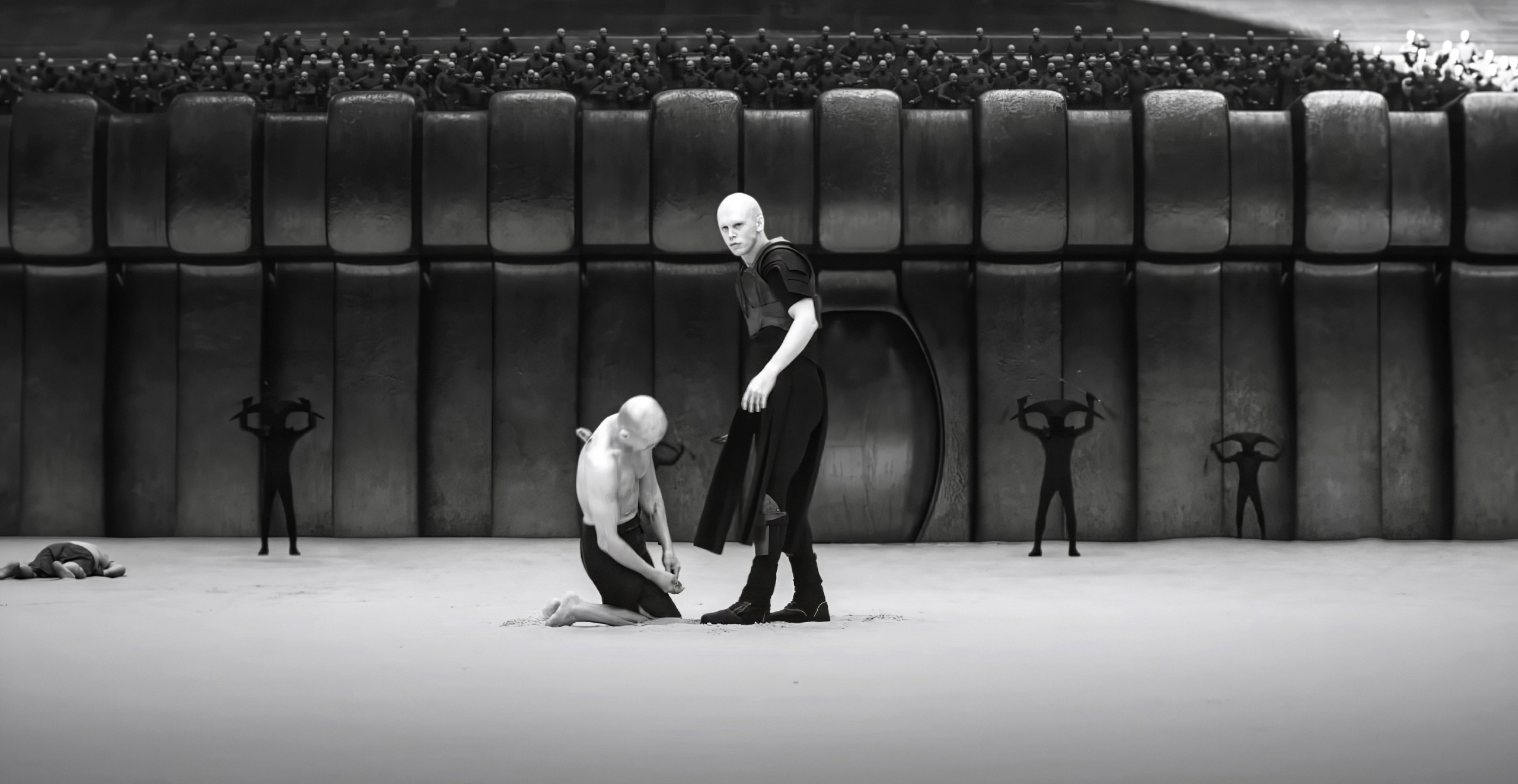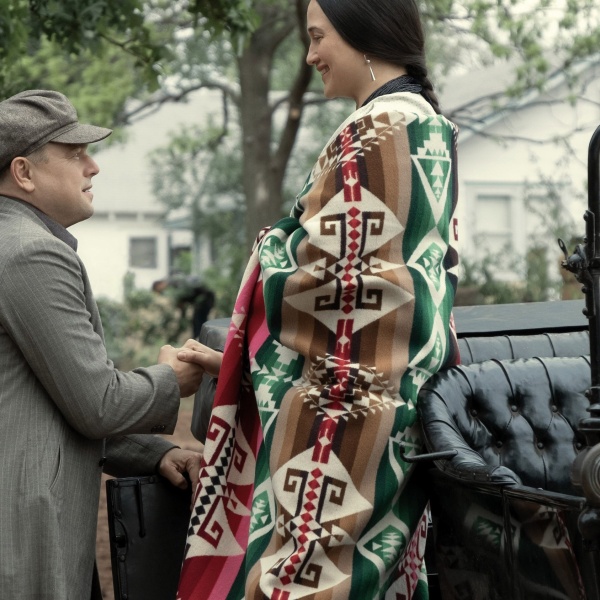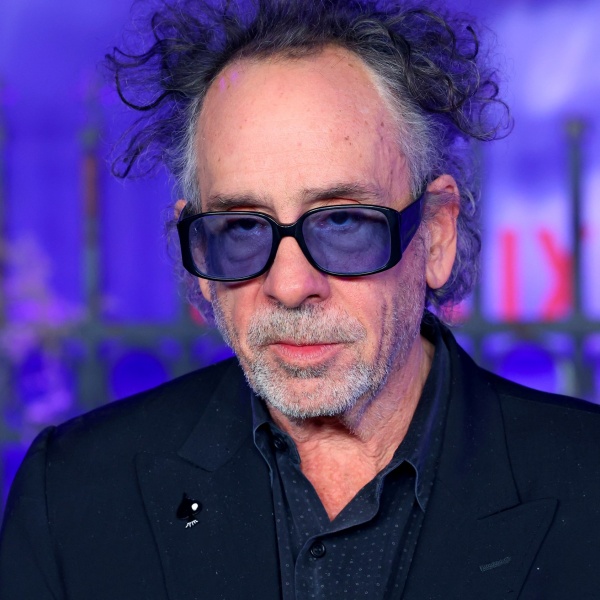Nominations voting is from January 8-12, 2025, with official Oscar nominations announced January 17, 2025. Final voting is February 11-18, 2025. And finally, the 97th Oscars telecast will be broadcast on Sunday, March 2 and air live on ABC at 7:00 p.m. ET/ 4:00 p.m. PT. We update our picks through awards season, so keep checking IndieWire for all our 2025 Oscar predictions.
The State of the Race
“Dune: Part Two” (Warner Bros.) is the early favorite in continuing Denis Villeneuve’s epic sci-fi trilogy with bigger and more lavish world-building. However, “Furiosa: A Mad Max Saga” (Warner Bros.), though not on the same scale, touts expansive environments as well.
Other standouts include “Civil War” (A24), “Kinds of Kindness” (Searchlight Pictures), “Sing Sing” (A24), and “Fly Me to the Moon” (Sony Pictures). Among the major fall contenders are “Wicked” (Universal), “Gladiator II” (Paramount), “Megalopolis” (Lionsgate), “Nosferatu” (Focus Features), “Blitz” (Apple TV+), and “The Piano Lesson” (Netflix).
“Dune’s” Oscar-winning production designer Patrice Vermette took a deeper dive into the Fremen and Harkonnen cultures, with 40 percent more sets to work with. The mysterious, hidden world of the nomadic Fremen is slowly being buried. This is the metaphor of the interior Sietch set, which is filled with sand. A bone harmonica inspired the Cave of Birds and the inside looks like giant fingerprints. The Maker’s Temple is a figure eight, symbolizing eternity, in which sand represents death and water life. The Cistern of Souls is where the Fremen collect water from the dead to sustain them in preparation for their dream of a green Arrakis, which Paul (Timothée Chalamet) promises to deliver.
For Giedi Primi, home of the tyrannical Hardonnen, Vermette was inspired by septic tanks because he associated the Hardonnen with having the morals of a sewer. This became the basis for his use of inky black plastic and silver. Cinematographer Greig Fraser used infrared cameras to bring the planet’s monochromatic atmosphere to life due to its black sun. For Vermette, that meant playing around creatively with black and white.

Oscar-winning “Furiosa” production designer Colin Gibson expanded the Wasteland desert landscape, focusing on the newly created Gas Town and Bullet Farm environments. Gas Town sits on a flat plain area around a toxic oil refinery, with its black, greasy, fractioning towers providing a distinctive texture. Gibson and his team envisioned Kuwait, where the derricks had been set on fire and everything was stained with sulfur and black. The oil rigs are still pumping and making fuel and money to continue engaging in battle, driving vehicles, and buying armaments.
Bullet Farm is a refurbished arms factory that sits in a quarry sunk into a large crater, which has a dirt road that circles the walls down into the central basin. It fuels the Citadel war effort against roaming gangs in the Wasteland. Its design was taken from a series of photos from Serra Pelada, which was a goldmine in Brazil from the ’80s, with thousands of operators climbing rickety wooden ladders with sacks on their backs. This became the image of man as a mule, dragging himself up a hill for the right to stay alive for another day.
In Alex Garland’s “Civil War,” production designer Caty Maxey created a nightmarish trek from New York to Washington, D.C., for four journalists (Kirsten Dunst, Wagner Moura, Cailee Spaeny, and Stephen McKinley Henderson). They witness the guerilla warfare ripping the country apart, contrasting the bucolic setting with destruction (the surreal Winter Wonderland set is a standout). This culminates with the final assault on the nation’s capital, shot in Atlanta using blue screens. For the attack on the White House, they utilized Tyler Perry’s three-story White House soundstage in Atlanta with custom-built sets. The art department meticulously reproduced the exterior, two rooms on the upper floor, the Dolley Madison room, and the press room.
For “Kinds of Kindness,” Yorgos Lanthimos’ twisted triptych about the loss of free will set in alternate realities (starring Jesse Plemons, Emma Stone, and Willem Dafoe), production designer Anthony Gasparro transformed New Orleans into an unrecognizable location by venturing into its outskirts. This provided an eccentric vibe for the uptown, suburban, and lakefront settings. The highlight is the secluded lakefront house that served as the sex cult living quarters run by Dafoe for the final chapter, “R.M.F. Eats a Sandwich.” It served its purpose as a remote, large-scale structure on a lake with a unique aesthetic quality, bolstered by the cistern over the pool that they built.

“Sing Sing,” director Greg Kwedar’s fact-based drama about an inmate theater troupe at Sing Sing, led by Colman Domingo, concerns their attempt to stage the epic time-traveling farce, “Breakin’ the Mummy’s Code.” With Ruta Kiskyte serving as production designer, filming took place at the upstate New York correctional facility, the decommissioned Downstate Correctional Facility in Beacon, the theater in nearby Beacon High School (used for the dress rehearsal), and the Hudson Sports Complex, southwest of Beacon, which featured a large cathedral-like space for the daytime rehearsals. Her set design was not only authentic to the place but also to the actual plays that they put on.
Greg Berlanti’s “Fly Me to the Moon,” the rom-com starring Scarlett Johansson and Channing Tatum, simultaneously explores real and fake Apollo 11 Moon landings. Production designer Shane Valentino’s biggest challenge was recreating NASA’s Cape Kennedy firing room: a bank of monitors where the engineers orchestrate the launch. It provided a new visual opportunity that was meticulously detailed with the cooperation of NASA and a consultant from the original firing room. The room was on shakers, and they had images on the screens for everyone in the room to authenticate the simulated and actual launch.
“Megalopolis,” Francis Ford Coppola’s $120 million epic sci-fi passion project drawing parallels between the fall of Rome and the collapse of America, is set in a New York-like metropolis called New Rome. After an accident destroys the decaying city, an architect (Adam Driver) with the power to control time attempts to rebuild it as a utopia through his miracle-building material, Megalon. Coppola had a vision of imagery that was more metaphorical by design, with the look of a woven mural or tapestry. Production designer Bradley Rubin stepped in when production was underway and adapted to the director’s methodology of leaning into the theatrical: no ceilings, everything is flexible, lots of flora and fauna and tactile organic shapes, and anything related to Megalon was treated as set extension to dealt with in post.
As for the rest: “Gladiator II,” Ridley Scott’s sequel to his Oscar winner, takes place two decades later as the Roman Empire continues to implode, providing a legacy-building opportunity for production designer Arthur Max. It concerns Lucius (Paul Mescal), the former heir to the Empire, forced to enter the Colosseum as a ruthless gladiator. Denzel Washington’s Macrinus, a former slave-turned-merchant, uses Lucius as part of his power play by pitting him against Pedro Pascal’s Roman general, Marcus Acacius, in the arena.
In “Wicked,” Jon Chu’s adaptation of the Broadway musical by Stephen Schwartz and Winnie Holtzman, we get the backstory between the Wicked Witch of the West and Glinda the Good. But before they become bitter enemies, an unlikely friendship forms at the magical Shiz University in the Land of Oz between Elphaba (Cynthia Erivo), a misunderstood girl with green skin, and the popular Galinda (Ariana Grande). Inspired by the original drawings from the L. Frank Baum novel, production designer Nathan Crowley starts with an art deco look and gets more fantastical with the world building.
“Nosferatu,” director Robert Eggers’ passion project, reworks the legendary silent vampire film by F.W. Murnau (remade by Werner Herzog in 1979), with Bill Skarsgård as the infamous Count Orlok, Lily-Rose Depp as Ellen Hutter, and Nicholas Hoult as her husband. Shot throughout Prague (including Barrandov Studios, the 14th-century Rožmitál Castle, and the Invalidovna complex), go-to production designer Craig Lathrop has plenty to work with to complement the desaturated 19th-century Romanticism of Jarin Blaschke 35mm cinematography.
“Blitz” reunites director Steve McQueen with production designer Adam Stockhausen (“Widows,” “12 Years a Slave”) for a drama about Londoners during the Blitz of World War II. Starring Saoirse Ronan, Elliott Heffernan, and singer/songwriter Paul Weller in his acting debut, it comes on the heels of the director’s World War II doc “Occupied City.” Warner Bros. Studios, Leavesden served as the hub, with filming occurring close to Waterloo Station and the London borough of Greenwich.
“The Piano Lesson,” Malcolm Washington’s adaption of the August Wilson play starring John David Washington and Samuel L. Jackson, explores the lives of the Charles family in 1936 Pittsburgh and the importance of the cherished family heirloom: a piano carved by an enslaved ancestor. David Bomba not only gets to production design the Depression-era house but also the crucial piano with its iconic mask.
“Joker: Folie à Deux” (Warner Bros.), Todd Phillips’ musical-thriller, finds Joker Joaquin Phoenix striking up a romance with Lady Gaga’s musical therapist, Harley Quinn, while incarcerated in Arkham Asylum, where they experience musical madness through their shared delusions. Production designer Mark Friedberg returns to delver more into the musically inspired inner fantasies of Joker, which expands to include Harley Quinn as well. “One From the Heart” has been cited as a visual inspiration by cinematographer Lawrence Sher.
Tim Burton’s “Beetlejuice Beetlejuice” (Warner Bros.), the sequel to his horror comedy, sees Michael Keaton’s foul-mouth ghoul accidentally return from the afterlife to torment the Deetz family 36 years later. Winona Ryder and Catherine O’Hara also return and are joined by newcomers Jenna Ortega, Justin Theroux, Monica Bellucci, Arthur Conti, and Willem Dafoe. Production designer Mark Scruton (“Wednesday”) is tasked with providing the hand-made look required of Burton, channeling the ’80s vibe while upping the stakes. Filming took place in England, Massachusetts, and Vermont.
Robert Zemeckis’ “Here” (Sony Pictures), based on the graphic novel by Richard McGuire about the inhabitants of a house throughout time, offers production designer Ashley Lamont the unique opportunity to chronicle space and time on an evolving set. The focus is a couple played by Tom Hanks and Robin Wright (reunited from “Forrest Gump”), who meet and marry in the late ’60s, raise a family, and grow old together. Zemeckis has adopted a virtual production methodology around Metaphysic Live, the generative AI software from Metaphysic, which face-swaps and de-ages the actors in real-time as they perform.
“SNL 1975″ (Sony Pictures), from director Jason Reitman, chronicles the lead-up to the premiere of NBC’s iconic late-night sketch comedy show, starring Gabriel LaBelle (“The Fabelmans”) as “SNL” creator/producer Lorne Michaels and an ensemble cast as the legendary comedy troupe that became famous on the show. Production designer Jess Gonchor recreates the iconic ’75 sets inside Rockefeller Plaza in Georgia.
Potential nominees are listed in alphabetical order; no film will be deemed a frontrunner until we have seen it.
Frontrunners
“Civil War”
“Dune: Part Two”
“Furiosa: A Mad Max Saga”
“Kinds of Kindness”
“Sing Sing”
Contenders
“Beetlejuice Beetlejuice”
“Blitz”
“Fly Me to the Moon”
“Gladiator II”
“Here”
“Joker: Folie à Deux”
“Megalopolis”
“Nosferatu”
“The Piano Lesson”
“SNL 1975”
“Wicked”





